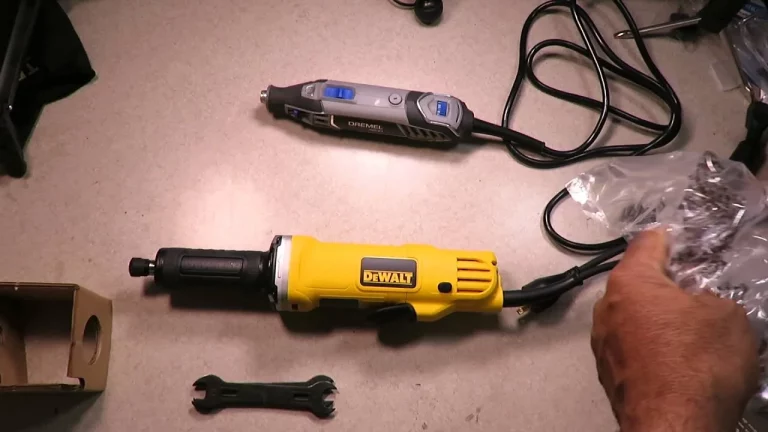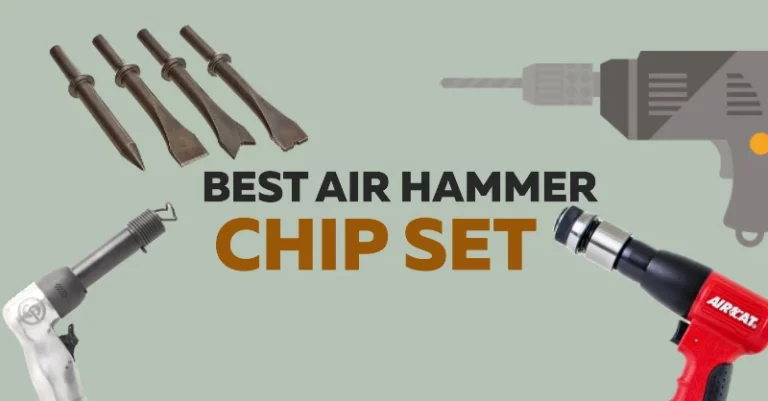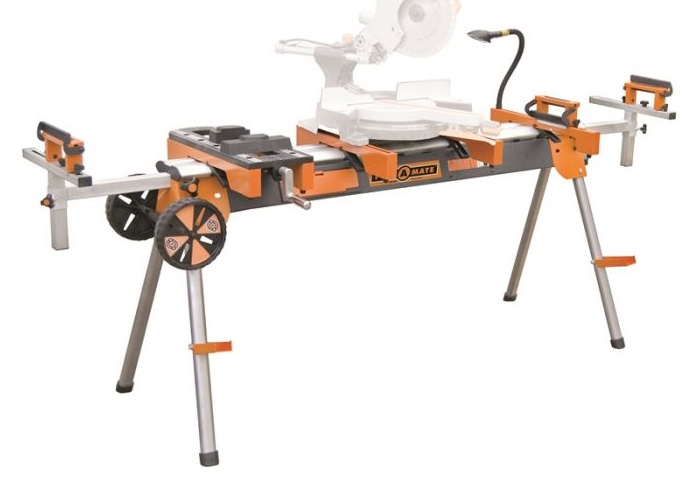What is the Difference Between 1/2 and 3/8 drills?
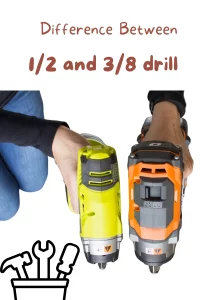
When it comes to woodworking tools, the drill you pick can significantly influence the outcome of your project. One question that often arises is: What’s the real difference between 1/2 and 3/8 drill sizes? 🤔
Quick Tip 💡: The “1/2” and “3/8” refer to the different sizes of the drill’s chuck, which determines the maximum size of the drill bit it can hold.
- 1/2-inch Drill 🔩: Known for its power and durability of a drill, it’s the go-to for professional work tasks.
- 3/8-inch Drill 🪛: Lightweight and affordable, it’s perfect for everyday DIY tasks.
In this guide, we’ll dive deep into the unique features of each, helping you choose the right tool for your needs. 🧰
What is Drill Chuck Size 📏
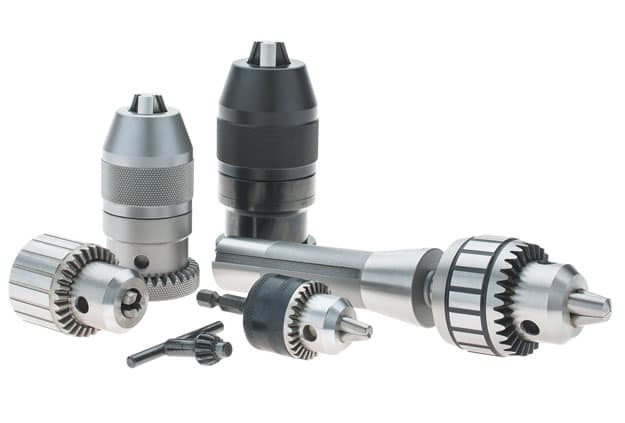
When we talk about drills, the term “chuck size” often pops up. But what does it really mean, and why is it so crucial?
Note 📌: The chuck is the part of the drill that holds the drill bit in place. Its size indicates the maximum diameter of the drill bit it can accommodate.
Why Chuck Size Matters:
- Versatility: The chuck size determines the range of drill bit sizes you can use. A larger chuck size means you can use bigger drill bits, allowing for more versatile drilling tasks.
- Performance: A drill’s performance isn’t just about power. The right chuck size ensures that the drill bit is held securely, leading to more accurate and efficient drilling.
- Safety: Using the correct chuck size for your drill bit is essential for safety. An improperly secured drill bit can lead to accidents and injuries. Always ensure the bit fits snugly!
Key Takeaway 🌟:
Choosing the right chuck size is not just about the type of tasks you’ll be performing, but also about ensuring safety and maximizing the drill’s potential. Read more
Similarities Between 1/2-inch and 3/8 inch Drills 🔄
While the difference between 1/2 and 3/8 drill sizes is a hot topic, it’s essential to recognize that these drills also share several similarities. Understanding these can help you appreciate the unique features of each even more.
1. Portability and Design 🎒:
Both 1/2-inch and 3/8-inch drills are designed with user convenience in mind. Their ergonomic designs ensure that they’re easy to handle, making them a favorite for both professionals and DIY enthusiasts.
2. Power Sources 🔌:
- AC-Powered Drills: Both sizes come in models that can be plugged into an electrical outlet, offering consistent power for prolonged tasks.
- Battery-Powered Drills 🔋: For those on the move or working in areas without easy access to power, both drills have cordless, battery-operated versions. This ensures flexibility in where and how you work.
3. Woodworking and Construction Applications 🪵:
Both drill sizes are versatile tools in the realm of woodworking and construction. Whether you’re assembling furniture, building a deck, or crafting intricate wooden designs, both drills are up to the task.
Tip 🛠️: While both drills can handle woodworking tasks, always consider the specific requirements of your project. For instance, if you’re working with harder woods or need to drill larger holes, a 1/2-inch drill might be more suitable.
Distinguishing Features: 1/2-inch vs. 3/8-inch Drills 🔍
While both 1/2-inch and 3/8-inch drills have their place in the toolbox, understanding their distinct features can help you choose the right tool for the job. Let’s break down the primary differences:
1. Torque and Power Drill Comparison 💪:
- 1/2-inch Drill: Offers higher torque, making it ideal for demanding tasks that require more force, such as drilling into hard materials or driving large screws.
- 3/8-inch Drill: While it provides less torque than its 1/2-inch counterpart, it’s sufficient for general-purpose drilling and screwing tasks.
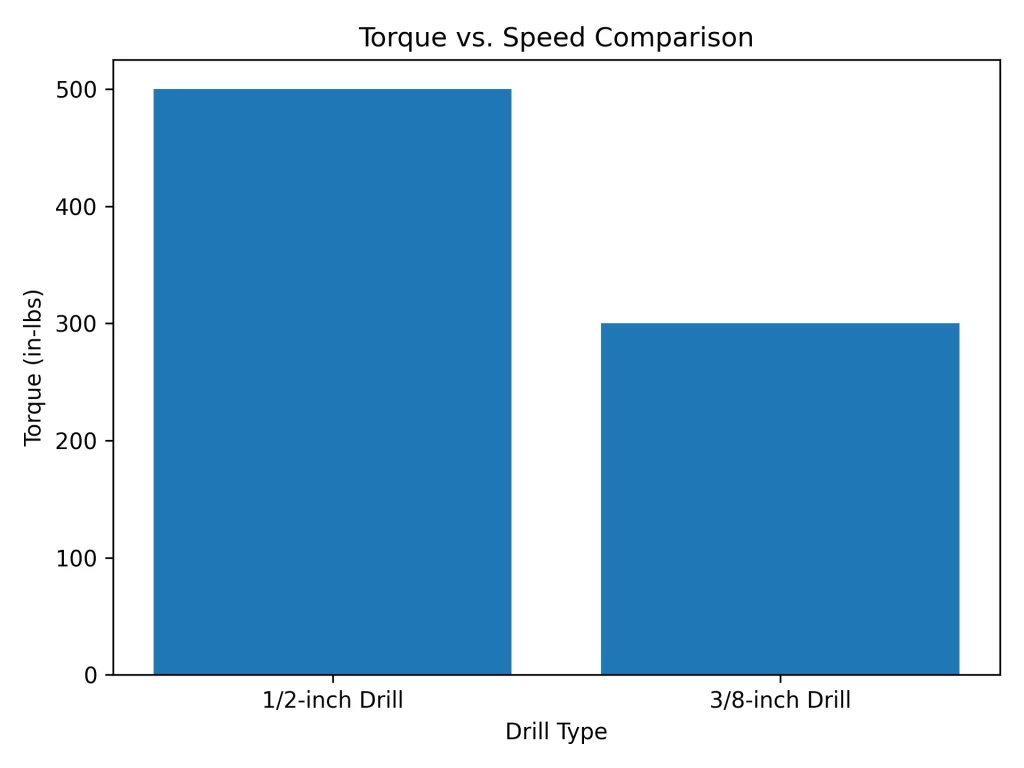
2. Speed Variations and Implications 🌀:
- 1/2-inch Drill: Generally slower due to its higher torque, ensuring power and precision for professional work tasks.
- 3/8-inch Drill: Tends to be faster, making it suitable for tasks that require speed over force, like drilling into softwoods.
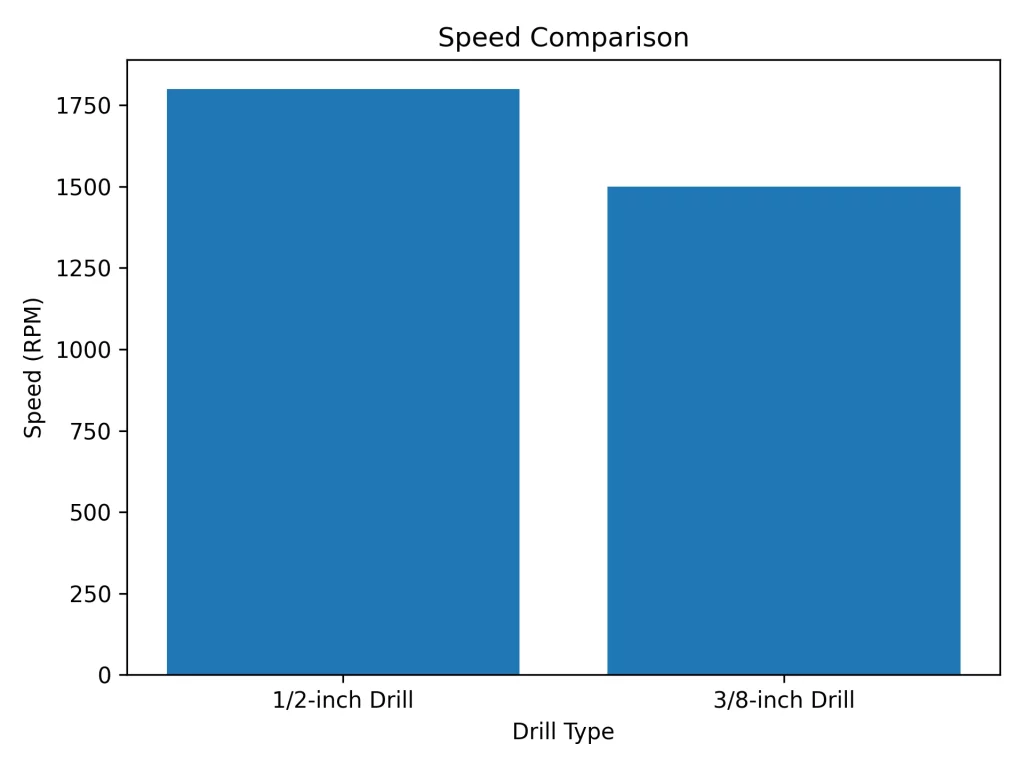
3. Durability and Lifespan Considerations 🛡️:
- 1/2-inch Drill: Built for rigorous tasks, it’s designed to withstand wear and tear, promising a longer lifespan.
- 3/8-inch Drill: While durable for everyday tasks, it might wear out quicker if consistently used for heavy-duty jobs.
4. Size, Weight, and User Comfort 🤲:
- 1/2-inch Drill: Being more robust, it’s heavier and might be bulkier, which could affect user comfort during prolonged use.
- 3/8-inch Drill: Lighter and more compact, it’s often preferred for tasks that require maneuverability and extended use.
5. Cost Analysis and Value for Money 💰:
- 1/2-inch Drill: Typically more expensive due to its enhanced features and durability.
- 3/8-inch Drill: More budget-friendly, offering great value for those who don’t need the extra power of a 1/2-inch drill.

Note 📌: While cost is a factor, always consider the drill’s intended use. Investing in a 1/2-inch drill might be more cost-effective in the long run for professionals, while a 3/8-inch drill could be perfect for occasional DIYers.
Distinguishing Features: 1/2-inch vs. 3/8-inch Drills 🔍
| Features | 1/2-inch Drills | 3/8-inch Drills |
|---|---|---|
| Torque and Power | Higher torque, suitable for demanding tasks | Moderate torque, ideal for regular tasks |
| Speed Variations | Generally slower due to higher torque | Faster, suitable for precision tasks |
| Durability and Lifespan | Built for heavy-duty work, more durable | Suited for lighter tasks, moderate durability |
| Size and Weight | Larger and heavier, might be less comfortable for prolonged use | Compact and lightweight, ergonomic for extended use |
| Cost Analysis | Typically more expensive due to enhanced features | More affordable, ideal for budget-conscious users |
Practical Applications: When to Use Which Drill 🛠️
Choosing between a 1/2-inch and a 3/8-inch drill often boils down to the specific tasks you’re planning to undertake. Here’s a guide to help you decide:
Practical Applications of Drills
| Task/Project | Recommended Drill Size | Reason |
|---|---|---|
| Drilling into hardwood | 1/2-inch Drill | Higher torque provides better performance in dense materials. |
| Assembling furniture | 3/8-inch Drill | Lightweight and precise, ideal for assembling and light tasks. |
| Heavy-duty construction tasks | 1/2-inch Drill | Built for demanding tasks, offers durability and power. |
| Hanging pictures | 3/8-inch Drill | Suitable for light drilling into walls without causing excessive damage. |
| Drilling into metal | 1/2-inch Drill | Requires higher torque and power to penetrate metal surfaces. |
| Craft and DIY projects | 3/8-inch Drill | Offers precision and control for detailed work. |
1/2-Inch Drill: The Heavy-Duty Choice 🏗️
- Tough Materials: Ideal for drilling into harder woods, metals, or masonry. Its higher torque ensures smooth operation even in challenging conditions.
- Larger Holes: If your project requires drilling larger holes, the 1/2-inch drill, with its ability to accommodate bigger drill bits, is your go-to tool.
- Professional Tasks: For carpenters, builders, and other professionals, the 1/2-inch drill offers the durability and power needed for day-to-day tasks.
- Extended Use: Designed for longevity, it’s perfect for long-term projects that demand consistent performance.
Tip 🌟: Always use the appropriate drill bit for the material you’re working on. For instance, masonry bits for concrete and HSS (High-Speed Steel) bits for metals.
3/8-Inch Drill: The Versatile Companion 🌱
- General-Purpose Drilling: Whether it’s hanging a picture frame or assembling furniture, the 3/8-inch drill is up to the task.
- DIY Projects: For home enthusiasts working on light to medium-duty tasks, this drill offers the perfect balance of power and precision.
- Tight Spaces: Its compact design makes it ideal for tasks that require maneuverability, like working in confined spaces or at awkward angles.
- Budget-Friendly Tasks: If you’re looking for a reliable drill without breaking the bank, the 3/8-inch drill offers great value for money.
Note 📌: While the 3/8-inch drill is versatile, always ensure you’re not pushing it beyond its limits, especially on professional work tasks.
Drill Bit Compatibility: Matching Your Drill to the Right Bit 🔗
Understanding the compatibility between your drill and the drill bits is crucial for efficient and safe operation. Let’s delve into how the chuck size relates to the drill bits you can use:
Understanding Drill Bit Sizes 📏
- Drill bits come in a variety of sizes, designed for different tasks and materials.
- The size of the drill bit refers to its diameter, which determines the size of the hole it will create.
Compatibility with 1/2-Inch Drills 🟦
- Chuck Capacity: Can hold drill bits up to 1/2-inch in diameter.
- Versatility: Suitable for a wider range of tasks due to its ability to accommodate larger bits.
- Common Uses: Drilling into hard materials, creating larger holes, and heavy-duty tasks.
Tip 💡: Always ensure the drill bit is securely fastened in the chuck to prevent wobbling or detachment during use.
Compatibility with 3/8-Inch Drills 🟨
- Chuck Capacity: Designed to hold drill bits up to 3/8-inch in diameter.
- Flexibility: Ideal for general-purpose drilling and tasks that require precision.
- Common Uses: Drilling into softwoods, plastics, and light metalwork.
Note 📌: While a 3/8-inch drill can’t hold bits larger than its chuck size, it can certainly hold smaller bits, offering a range of options for different tasks.
Selecting the Right Drill Bit 🛍️
- Material Matters: Choose a bit designed for the material you’re drilling into. For instance, wood bits for timber and masonry bits for brick or concrete.
- Job Specificity: Some tasks might require specialized bits, like spade bits for creating large holes or countersink bits for flush screw placements.
Exploring Additional Drill Sizes: Beyond 3/8 inch drill and the ½ inch Drills 🔍
While the 1/2-inch and 3/8-inch drills are among the most popular, the world of drilling offers a variety of other sizes tailored for specific tasks. Let’s delve into some of these sizes and their unique applications:
1/4-Inch Drills: The Compact Choice 🌟
- Features: Lightweight, highly portable, and perfect for light-duty tasks.
- Best For: Small DIY projects, crafting, and tasks that require precision in tight spaces.
5/8-Inch Drills: Bridging the Gap 🌉
- Features: Offers a middle ground between power and versatility.
- Best For: Medium-duty tasks, such as drilling into harder woods or thin metals.
3/4-Inch Drills: The Powerhouse 💪
- Features: High torque and power, designed for the most demanding tasks.
- Best For: Professional construction, masonry, and heavy woodworking projects.
Tip 💡: Always consider the nature of your project and the material you’re working with when choosing a drill size. The right tool can make a world of difference!
Specialty Drills 🎨
- Right Angle Drills: Designed to reach tight spaces, especially where a regular drill won’t fit.
- Hammer Drills: Perfect for drilling into masonry and concrete, combining rotation with a hammering action.
- Impact Drivers: Not exactly a drill, but often used for driving screws with high torque.
Note 📌: Specialty drills are tailored for specific tasks. Ensure you’re using the right tool for the job to achieve the best results and maintain safety.
Conclusion: Make the Right Choice Between two drill sizes 1/2-inch and 3/8-inch 🛠️🌟
Choosing the right drill size is more than just a matter of preference; it’s about ensuring you have the right tool for the job. Whether you’re a seasoned carpenter, a DIY enthusiast, or someone just starting their woodworking journey, understanding the what’s difference between 1/2-inch and 3/8-inch drills is crucial.
🔹 Remember:
- A 1/2-inch drill is your go-to for heavy-duty tasks, offering more powerful and versatility. It’s an investment that pays off in the long run, especially for professional projects.
- On the other hand, a 3/8-inch drill is perfect for lighter tasks and domestic chores. It’s more affordable and is often the preferred choice for home DIY enthusiasts.
Quote 🖋️: “The right tool doesn’t make the craftsman, but it certainly helps get the job done right.” – Anonymous
As you embark on your woodworking projects, always prioritize safety, efficiency, and the task at hand when choosing your tools. And remember, that the drill is best one whhich meets your specific needs and ensures a job well done.
Best Choice for Each Size
Drill Specifications Comparison
| Drill Model | Chuck Size | Maximum Torque | Speed Settings | Weight | Battery Life | Price |
|---|---|---|---|---|---|---|
| DeWalt XYZ123 | 1/2-inch | 500 in-lbs | 0-2,000 RPM | 3.5 lbs | 5 hours | $150 |
| Bosch ABC789 | 1/2-inch | 550 in-lbs | 0-1,800 RPM | 4 lbs | 4.5 hours | $160 |
| Makita LMN456 | 3/8-inch | 300 in-lbs | 0-1,500 RPM | 2.8 lbs | 6 hours | $120 |
| DeWalt DEF123 | 3/8-inch | 320 in-lbs | 0-1,400 RPM | 2.5 lbs | 5.5 hours | $130 |
1/2-inch Drills:
- DeWalt DCD996B 20V MAX XR Brushless 3-Speed Hammer Drill
- Features:
- High-performance brushless motor.
- 3-speed settings for optimized application versatility.
- Heavy-duty 1/2-inch ratcheting nitro-carburized metal chuck with carbide inserts for superior bit gripping strength.
- LED spotlight mode features 20-minute shutoff function.
- Safety:
- Comes with a side handle for additional grip and control.
- Overload protection prevents damage to the tool and battery.
- Why it’s recommended: DeWalt is a trusted brand in the woodworking community, and this particular model is known for its power, durability, and versatility.
- Features:
- Makita XPH07Z 18V LXT Lithium-Ion Brushless Cordless 1/2″ Hammer Driver-Drill
- Features:
- BL Brushless Motor delivers 1,090 in.lbs. of maximum torque.
- Electronically-controlled BL Brushless Motor efficiently uses energy to match torque and RPM.
- All metal variable 2-speed transmission for a wide range of drilling, fastening, and hammer drilling applications.
- Safety:
- Star Protection Computer Controls to protect against overloading, over-discharging, and over-heating.
- Why it’s recommended: Makita is renowned for its quality and innovation. This model is powerful and offers advanced technology for improved performance.
- Features:
3/8-inch Drills:
- Bosch PS32-02 Cordless Drill Driver
- Features:
- Compact and lightweight design.
- Brushless motor technology for extended runtime and longer motor life.
- 2-speed transmission and 20+1 clutch settings.
- Integrated LED light for working in dark areas.
- Safety:
- Electronic Cell and Motor Protection for overload protection.
- Why it’s recommended: Bosch is a reliable brand, and this model is perfect for those who need a lightweight yet powerful drill for various tasks.
- Features:
- Makita FD05R1 12V Max CXT Lithium-Ion Cordless Driver-Drill
- Features:
- Compact and ergonomic design.
- 2-speed transmission for a wide range of drilling and driving applications.
- Delivers up to 250 in.lbs. of maximum torque.
- Safety:
- Built-in protection circuit protects against overloading, over-discharging, and over-heating.
- Why it’s recommended: This Makita model is known for its compactness and efficiency, making it ideal for DIY projects and light professional tasks.
- Features:
Frequently Asked Questions (FAQs) About Drill Sizes ❓
Navigating the world of drills can be a bit daunting, especially with so many sizes and types available. Here are answers to some of the most commonly asked questions about drill sizes:
1. Why does chuck size matter in drills? 🤔
Chuck size determines the maximum diameter of the drill bit that the drill can accommodate. A larger chuck size offers more versatility in terms of the tasks it can handle.
2. Can I use a 3/8-inch drill bit in a 1/2-inch drill? 🔄
Absolutely! A 1/2-inch drill can accommodate any drill bit up to its maximum chuck size, including 3/8-inch bits.
Tip 💡: Ensure the drill bit is securely fastened in the chuck to prevent any wobbling during use.
3. Which drill size is best for home DIY projects? 🏠
For most home DIY tasks, a 3/8-inch drill offers a good balance between power and precision. However, if you’re tackling more demanding tasks, a 1/2-inch drill might be more suitable.
4. How do I maintain my drill and ensure its longevity? 🛠️
Regularly clean the drill and its vents, check for any worn-out parts, and store it in a cool, dry place. Also, ensure you’re using the right drill bit for the material to prevent undue stress on the drill.
5. Are cordless drills as powerful as corded ones? 🔋
Modern cordless drills offer impressive power, often rivaling their corded counterparts. However, corded drills provide consistent power without worrying about battery life.
Note 📌: While cordless drills offer mobility, always ensure your battery is fully charged before starting a task.

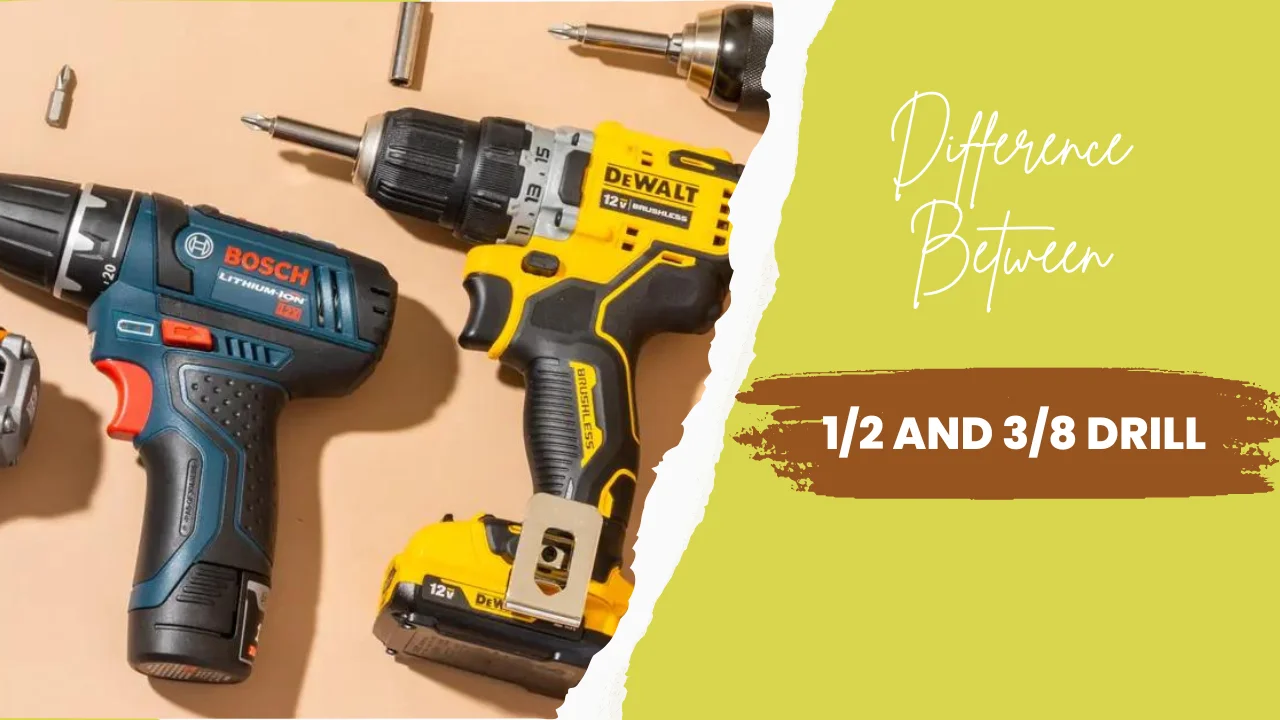
![Top 10 Best Hammer Drills For Concrete [Review and Guide 2023]](https://bestwoodrouterguru.com/wp-content/uploads/2023/07/construction-worker-drilling-into-concrete-768x402.webp)
